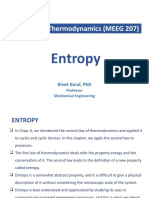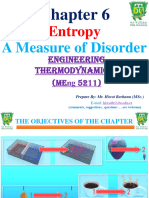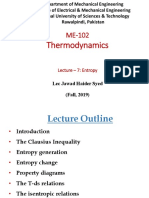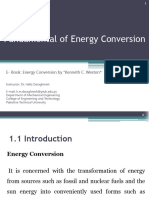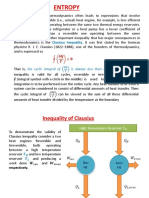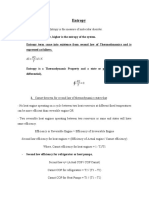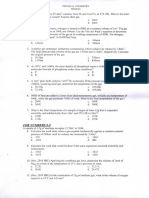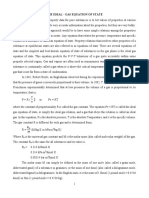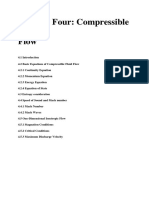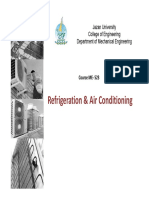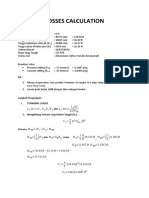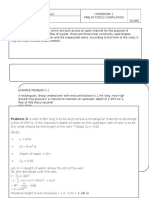0% found this document useful (0 votes)
20 views30 pagesCHEN310 Module1
The document covers the concept of entropy in thermodynamics, detailing its significance as an intrinsic property of systems and its relation to the second law of thermodynamics. It explains the implications of entropy changes in various processes, including heat transfer and heat engines, and presents axiomatic statements that govern these principles. Additionally, it discusses entropy balances for open systems and provides examples of entropy calculations for different states.
Uploaded by
Anu AfolabiCopyright
© © All Rights Reserved
We take content rights seriously. If you suspect this is your content, claim it here.
Available Formats
Download as PDF, TXT or read online on Scribd
0% found this document useful (0 votes)
20 views30 pagesCHEN310 Module1
The document covers the concept of entropy in thermodynamics, detailing its significance as an intrinsic property of systems and its relation to the second law of thermodynamics. It explains the implications of entropy changes in various processes, including heat transfer and heat engines, and presents axiomatic statements that govern these principles. Additionally, it discusses entropy balances for open systems and provides examples of entropy calculations for different states.
Uploaded by
Anu AfolabiCopyright
© © All Rights Reserved
We take content rights seriously. If you suspect this is your content, claim it here.
Available Formats
Download as PDF, TXT or read online on Scribd
/ 30
